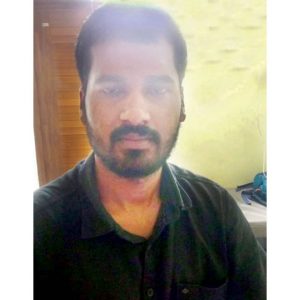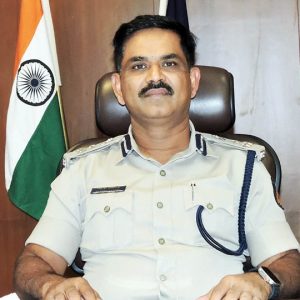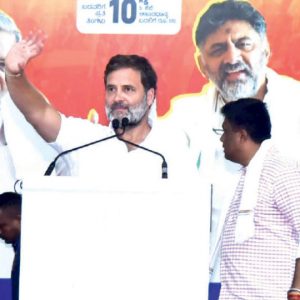In the United States, every established system receives harsh criticism. Allegations have been made against the Indian schooling structure by students, parents, and instructors. There is a perception among students, teachers, and parents alike that they are overworked and underpaid. What is the point of no return? There have been significant improvements in education in recent years, but there is a lot more that remains to be improved. Having a well-educated population is critical to a country’s long-term success and general prosperity. A professional degree may not be feasible for everybody, but the most important thing is to have a solid foundation in academics. To put it another way, one should be able to read and write fluently. Since 1947, India’s educational system has made great progress. However, we are firm believers that no matter how good something is, it can always be better. So, let’s have a look at ten ideas for enhancing our educational system. Now, let’s see what modifications are a must within Indian education that should be implemented as soon as possible.
Tuition-based Education
One can’t help but feel that they’ve entered a vicious loop with no end in sight while discussing this topic. Student complaints about slack and unsatisfactory classroom instruction are driving a surge in tuition courses. Tuition courses claim that students are taught material before it is ever taught in the classroom. Indian students can take some of the best essay services and educate themselves even online. To put it another way, they lose all of their will and energy to go to school at all. And how about the family whose hard-earned income is being drained just to pay for education and tuition? There is still some reason for optimism despite the bleakness of the situation since a few schools are beginning to implement some of these reforms. It remains to be seen how soon these alterations will trickle down to the Indian populace on the whole.
Personalized Instruction
Because India is so different, how could we anticipate all students to absorb information at the same rate? We need to accept that not all members of the class of 30 will benefit from the same type of instruction. A person’s ability to learn varies from person to person. Hence, tailored education is required in this context. Ai systems and robots, for example, might be used to assist instructors in better communicating with their pupils.
Give Priority on Competencies Over Metrics
Marks are nothing more than a number. But despite this, our school curriculum is still primarily focused on educating and assessing information rather than learning practices at every level. As a result, kids struggle academically. The only way to feed a guy for a lifetime is to educate him on how and when to catch the fish. That’s what an old dictum teaches us. However, when the semester examinations are completed, information is often forgotten. Instead of teaching by rote, schools should place a focus on conceptual learning. As a result, students will retain more of what they learn.
Free Classes About Learning the Basics of Computer Use
It’s easy to see why we think this is a good idea. It’s no longer enough to just know how to use a computer; you must also know how to use it properly. A lot of college essay writing reviews online, like at Merurynews.com can help you to at least learn its basics. Technology is used in almost every profession today, from accounting to engineering to education to ordinary back-office work. Our students should have a fundamental understanding of these tools.
Mechanical Learning Without Understanding the Material
We’ve come a long way, yet we’re still stuck in the rut of rote memorization. IB schools are transforming the quality education at their stage, but we must also keep in mind that the number of students who attend IB schools is quite small. The educational system they provide is not available to everyone. As a result, the government must seize the reins and banish rote learning from educational institutions at all levels. The introduction of conceptual education in public schools must be promoted to prevent pupils from memorizing what they are taught. Students will be able to remember and apply the ideas more effectively as a result of this.
There Is a Wide Range of Educational Options Available
Youngsters sometimes compare themselves to their American peers out of jealousy. Have you ever thought about why this is so? There are just three possibilities for students in India after 10th grade: Science, Arts, and Commerce. Students who fail to meet these requirements are directed directly to the diploma and certificate programs. Combination courses, where students may choose a primary and a minor, are long overdue in the Indian educational system. Chiropractic and Art History children in the United States are comparable in this regard.
The Infrastructure
Shape-funded institutions are in a terrible state. They have a terrible network of roads and highways. Free and mandatory education should not be the primary focus. Only excellent education should be the focus, though. Do not compel kids who aren’t interested in learning to do so.
Quota fighters have turned government institutions into battlegrounds. Everyone should be allowed to attend college based on their academic achievement, regardless of their socioeconomic status. Caste, religion, or geographic location should be ignored. The state should only support the impoverished. Girls’ education should be given special consideration. All students should be made aware of the importance of empowering women.
The primary mission of the academic system should be to provide students with access to quality instruction and a broad base of knowledge. Caste and religious quotas, as well as freebies like sterilized napkins, meals, literature, and clothing, should be abolished. Schools should not be competing with one another. The ranking of educational institutions should be done. The universities and boards are forced to modify or exaggerate points and grades as a result of this strategy. Even just the HRD has decided to cease doing this. Everybody must be able to deal with reality, no matter how unpleasant it may be. Taking this step is a critical part of the reform process.
The Language Gap Must Be Closed
The National language of Indian people is, of course, Hindi, but English is increasingly the dominant language, providing a certain level of sophistication to those who speak it. When it comes to education, English-medium schools dominate the field, whereas Hindi-medium institutions are often ignored. Language discrimination is widespread in both elementary and secondary school, as well as in the workplace. Instead of hiring a Hindi speaker, the corporation chooses to hire an English speaker for the position. Most individuals in the hamlet could become physicians and engineers if the school system provided equitable access to all dialects.
Conclusion
Over 250 million children are served by the Indian educational system, which is one of the world’s biggest suppliers of education. School curriculum is the 21st-century method of teaching pupils in education institutions. New education necessitates shifting away from conventional major topics such as medicine, non-medical business, or the humanities, and instead focusing on life skills and critical thinking. Electronics like smartphones, mobile apps, sound / visual portals, and podcasts are all part of the modern education system that aims to teach students while keeping them entertained.








Recent Comments